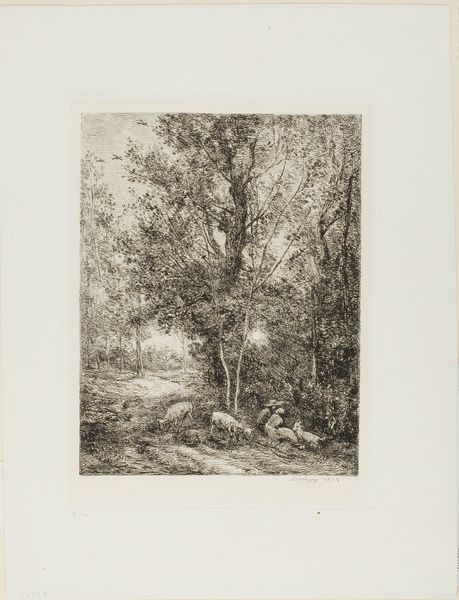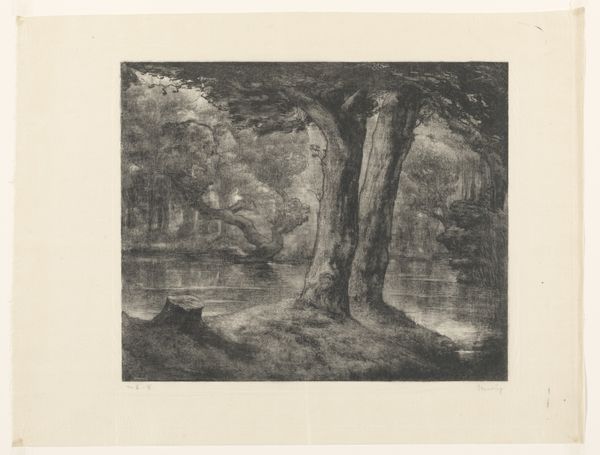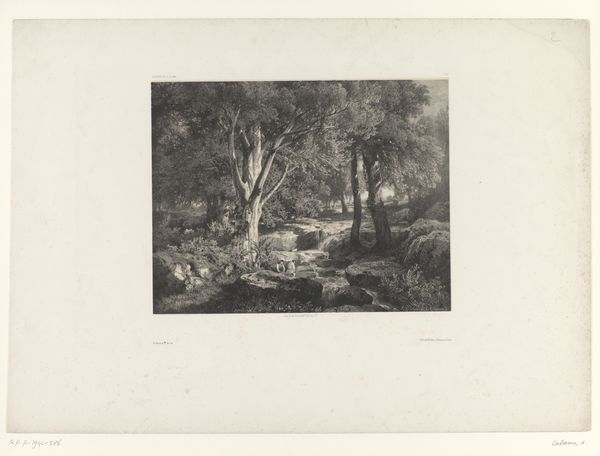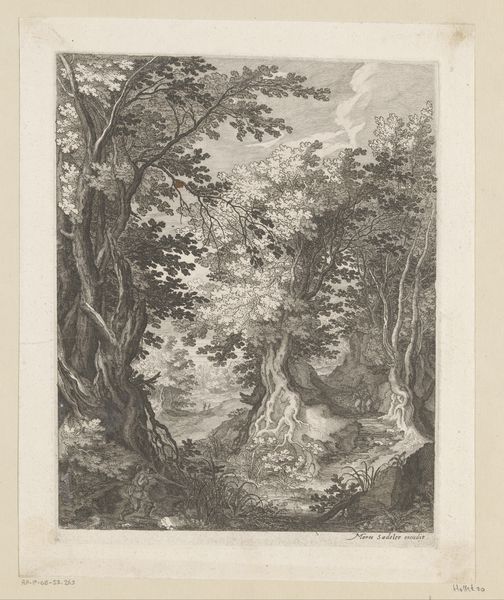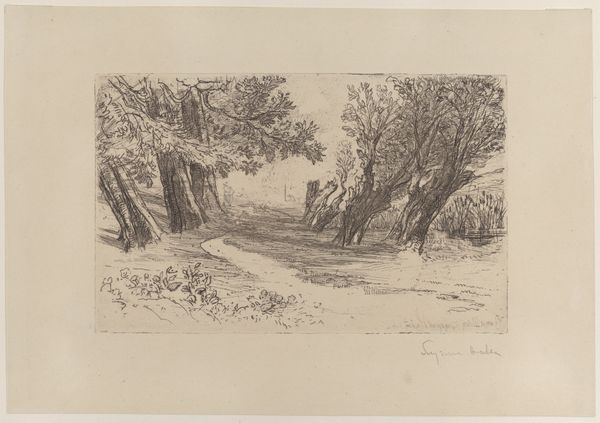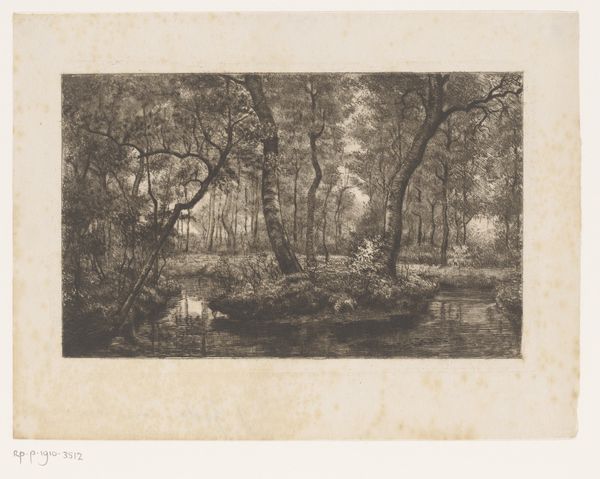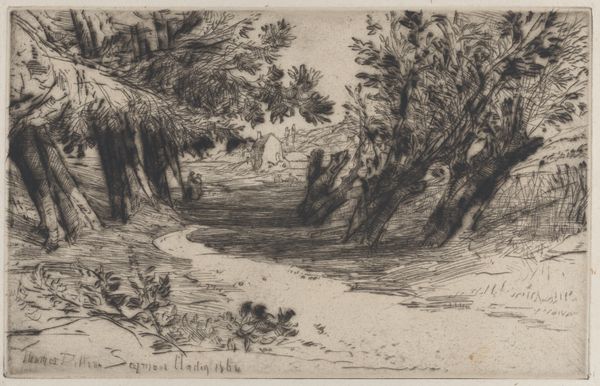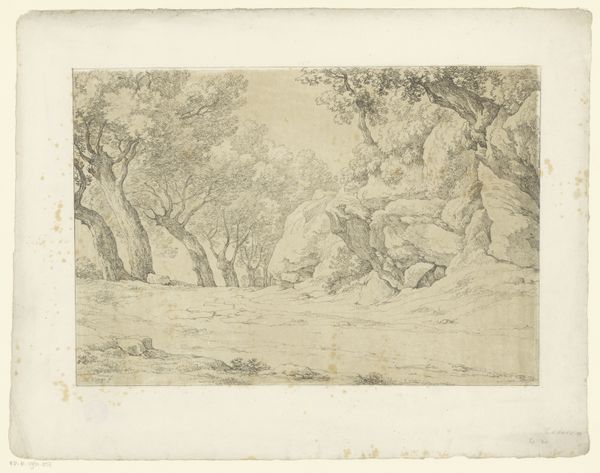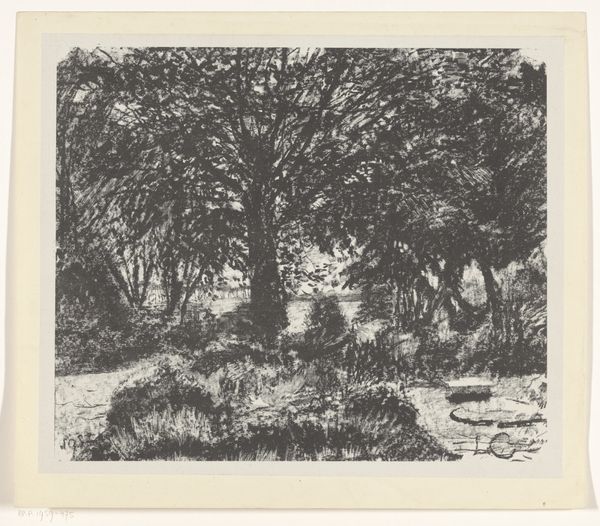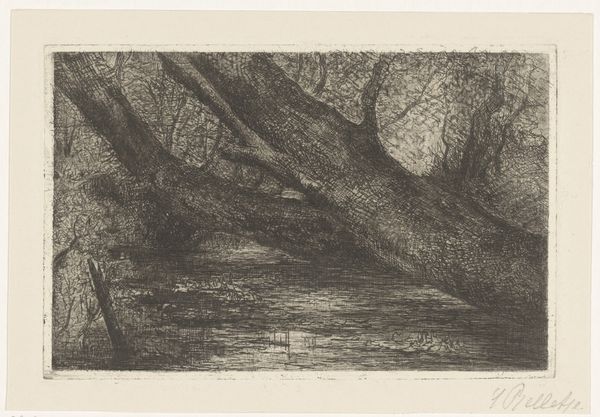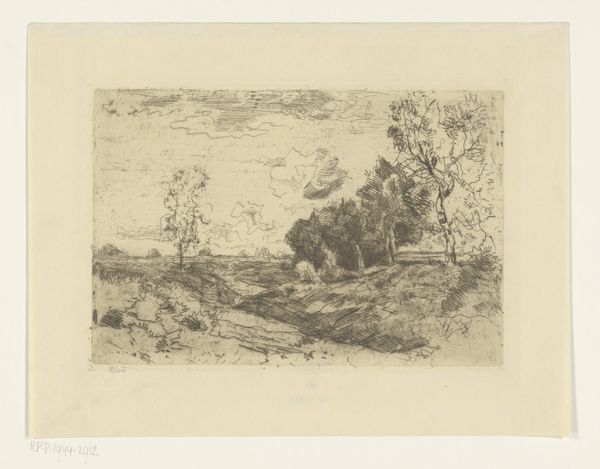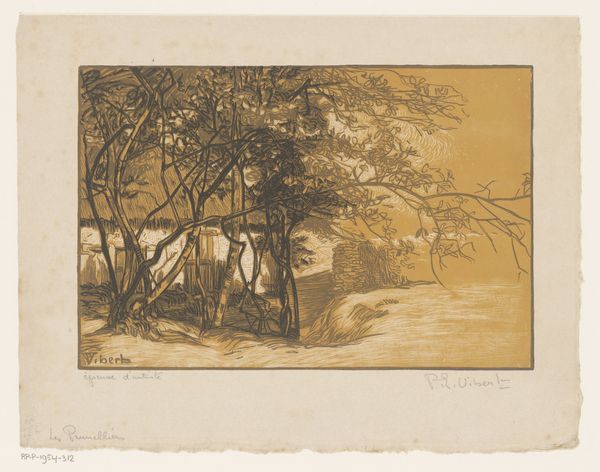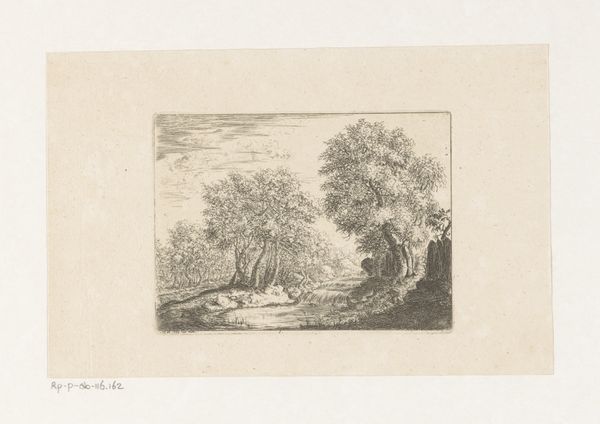
Copyright: Public Domain
Curator: Charles Jacque's "Dessous de bois à Noisy," created around 1860 to 1864, presents us with an intriguing landscape rendered through the medium of etching. It's currently held in the Städel Museum. Editor: This is striking! It feels so immersive, as if you could just step right onto that sun-dappled path. It almost has a secret, storybook vibe to it, don't you think? Curator: Indeed. Notice how Jacque masterfully manipulates light and shadow. The dense foliage, achieved through intricate linework, creates a complex interplay of tonal values. This serves to both obscure and reveal, drawing the eye deeper into the composition. Editor: The contrast really grabs you. The starkness between the foreground, shrouded in those intricate, dark details, and that glimmer of bright clearing at the center—it's almost like hope filtering through chaos. Am I reading too much into a forest path here? Curator: Not at all! It speaks to a tenet of Romanticism. Jacque is invoking an emotional response through his detailed observation and his compositional technique. Observe also, how the pathway directs your eye using linear perspective, creating depth, but, more significantly, acting as a compositional armature. Editor: It really does. It leads you right into the unknown. And yet there’s something so inviting about it all—the play of light on the path, the implication of further scenery concealed just beyond view. Curator: We can certainly interpret it that way, yes. Consider as well the textures conjured using etching techniques—a method involving the use of acid to cut into the metal plate, allowing for fine lines and dense cross-hatching, evident here. Editor: You know, staring at this intricate web of lines, I keep thinking how much nature is about patterns, about hidden structures. Jacque really managed to get at the beautiful order within seeming wildness. It is quite compelling to observe that quality throughout this print. Curator: It reflects the artistic preoccupations of the period, to accurately depict not just visual reality but its emotional equivalent—and in a manner faithful to material processes. Editor: And he has done that expertly, wouldn’t you agree? Curator: Absolutely, I see the Romantic sentiment vividly evoked by the hand of Charles Jacque. Editor: This piece invites one to stroll, to linger, to become immersed. Bravo, Monsieur Jacque.
Comments
No comments
Be the first to comment and join the conversation on the ultimate creative platform.
